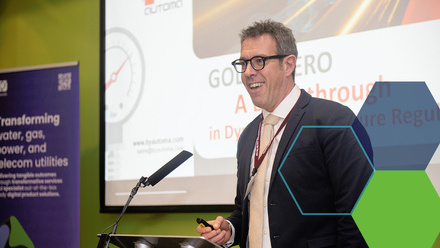Composites repairs are now being used to restore integrity of corrosion defects with wall thinning on steel lines on the HP/ IP networks supported by the Gas Networks Management Procedure GN/PM/P/25. They are also being used in other industries to repair more significant (leaking) defects.
This presentation will present a summary of P/25 and experience to date. Furthermore, it will report on a project completed under a DIA funding agreement with Cadent to assess the potential of composite repairs to provide permanent repairs on the metallic distribution network where damage exceeds the limits given in P/25.
Trials are currently being undertaken on leaking LP-MP assets and specified design parameters and validation completed will be introduced. Purpose designed steel clamps have been used for repairs outside the specified parameters, again adopting a solution that is standard in other industries to help manage network integrity at a lower cost than traditional options; a brief overview of this technology and experience to date will be presented.
Dr Paul Hill, MIMMM CEng, Service Line Manager - Composite Repair, TEAM
Dr Hill graduated from Cambridge University in the UK and continued his studies there to complete his PhD, focussing on modelling the long-term performance of composite materials. His early career focused on the use of composites in offshore and gas transmission applications and he has spent the last 20 years looking at how to use these materials safely to repair degraded structures including pipes, tanks, bridges, naval ships and passenger trains.
Dr Hill has been involved in the development and standardisation of composite repairs for pipelines and piping since 1999 and has been a member of both ASME and ISO committees preparing the standards that cover this area from their beginning. He is the Project Leader of the current initiative to revise ISO 24817.
He is responsible for TEAM’s global composite repair business which includes defining training requirements for engineers and technicians, design methods, material selection and technical development. He has extensive knowledge of recent industry test programs that have looked at performance of composite repairs and is active in disseminating best practice in their selection and use to support industry objectives to reduce operating costs without compromising safety of operation.



